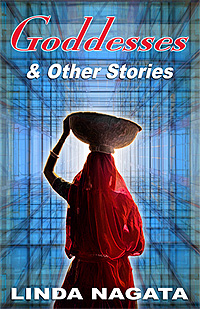The option to change your mind is one of the great advantages of indie publishing.
Of all the steps involved in turning a polished manuscript into a book, the hardest by far is cover design. The purpose of a cover is to catch the attention of people who might read and enjoy the book. To my mind a cover should convey the “flavor†of the story, along with something of the setting and genre in an intriguing fashion that will draw in readers who might like the book but have never heard of you or it.
The Dread Hammer is a fantasy novel, but it’s hard for me to say what sort of fantasy it is. Despite swords and magic, it’s not like traditional heroic fantasy, or sword & sorcery, or a quest novel, or urban fantasy, or any subgenre that I’m aware of. It’s darkly humorous, unconventional, and, at 65,000 words, it’s very short compared to most fantasy novels. I consider it “quirky,†so I decided to put a quirky cover on it.
The image I had in mind was of the main character in an active pose, done in a style of art commonly seen in computer games. I wanted this style because it was different (for a book cover), and a little campy. I hoped it would communicate the quirky nature of the book while being eye-catching enough to pull in the curious.
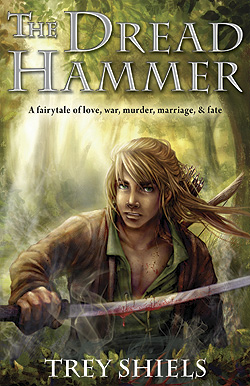 I can’t draw to save my soul, but I do know enough Photoshop to be dangerous, so my method of developing a cover concept is to scour the web for relevant images, slap them together in Photoshop, and amend until I’m sort-of happy with the layout. In the case of The Dread Hammer I put together an extremely rough guide for my artist Sarah Adams, and she gave me back an entirely original digital painting that was exactly what I was looking for. Click the image to see a larger version. This is an impressive piece of work.
I can’t draw to save my soul, but I do know enough Photoshop to be dangerous, so my method of developing a cover concept is to scour the web for relevant images, slap them together in Photoshop, and amend until I’m sort-of happy with the layout. In the case of The Dread Hammer I put together an extremely rough guide for my artist Sarah Adams, and she gave me back an entirely original digital painting that was exactly what I was looking for. Click the image to see a larger version. This is an impressive piece of work.
But now, seven months after publication, I’m reassessing my initial concept. This is the great advantage of indie publishing. The book is mine, and if I want to change my mind and try different things, I can. So I’m making two big changes: the cover, and my name.
A number of people have persuaded me that publishing under a pen name was never a good idea, so I’m going to re-issue the book under my own name—easy enough.
But changing the cover—that’s hard. What’s wrong with the existing cover? There’s nothing at all wrong with the art itself. I think Sarah did a wonderful job. But sales are slow. I’m not reaching my potential audience, so I’ve begun to think of new ways to frame and present the book—especially important because the sequel, Hepen the Watcher, will soon be ready to follow.
So what do I think is not working with the existing cover? I have no hard data at all, not even anecdotal data, except this one thing: several people have mentioned that the book looks YA—as if it’s aimed at the young-adult market. It’s not. It has adult themes involving family dynamics, personal choice, and personal obligation. It’s also got some fairly graphic sex and lots of very graphic violence. As the tagline says, it’s a “fairytale of love, war, murder, marriage, and fate.â€
Besides the YA issue, I’ve come to feel the current cover makes it hard to take the book seriously. This is a guess on my part. No one has told me this. And yes, the story is darkly humorous—but I want it to be taken seriously as literature that is worth one’s time to read.
So I’ve gone back to Photoshop and started patching together new cover concepts. My current goals:
1. Emphasizing the idea of a classic “fairytaleâ€
2. Establishing a general genre setting
2. Creating a visual tension through the intrusion of graphic violence in an idyllic setting
This still leaves an abundance of questions! Which character, if any, should go on the cover? What style should be used? And believe it or not, the biggest question so far has been what weapon to display!
Next: the cover concept >>
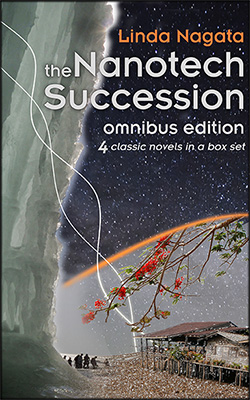 The publication of Edges has inspired many readers to check out the earlier Nanotech Succession novels, and this in turn inspired me to pull together an updated edition of The Nanotech Succession Omnibus Edition.
The publication of Edges has inspired many readers to check out the earlier Nanotech Succession novels, and this in turn inspired me to pull together an updated edition of The Nanotech Succession Omnibus Edition. 







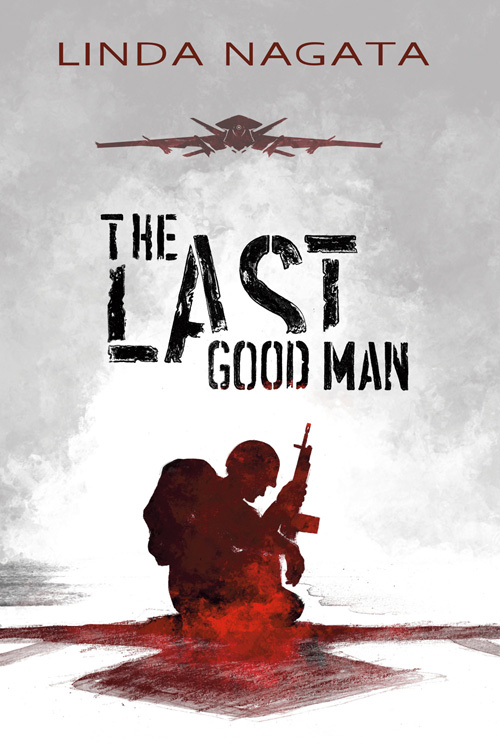
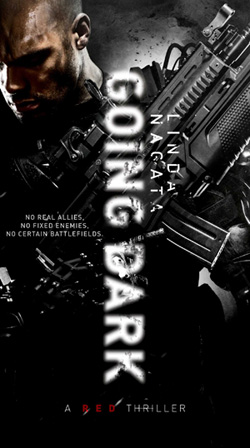
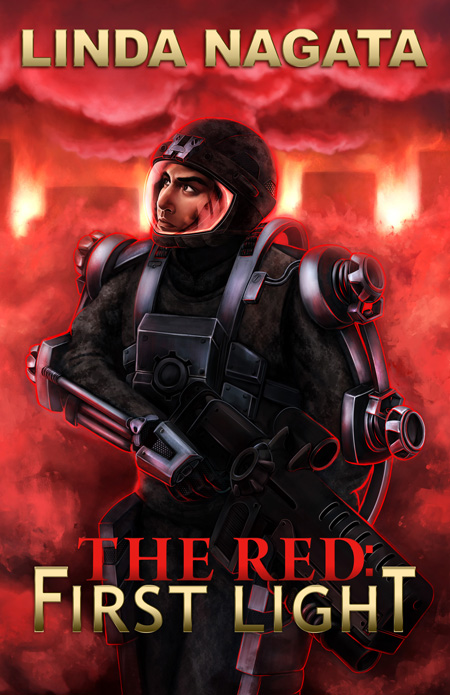

 Just had to share this detail illustration from the print cover of Hepen the Watcher. On the front cover, the ax is clutched in the hands of my anti-hero protagonist. I like to include a decorative element on the back cover, and the ax seemed ideal, so I tried to separate the layers in the Photoshop master file, and pull the ax out. That didn’t work as well as I’d hoped, so I went back to the artist,
Just had to share this detail illustration from the print cover of Hepen the Watcher. On the front cover, the ax is clutched in the hands of my anti-hero protagonist. I like to include a decorative element on the back cover, and the ax seemed ideal, so I tried to separate the layers in the Photoshop master file, and pull the ax out. That didn’t work as well as I’d hoped, so I went back to the artist, 